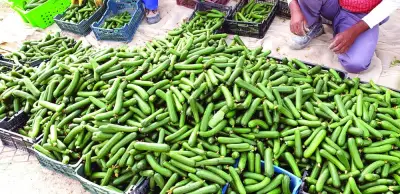Every November, air pollution in northern India reaches unimaginable levels, forcing schools shut and filling hospital wards with wheezing patients.
As winter descends, cooler air traps car fumes, factory emissions and construction dust close to the ground, fomenting a toxic brew of harmful pollutants that regularly exceed 30 times the World Health Organisation safe limit.
The scourge is compounded as farmers like Singh — rushing to ready their fields for next season’s wheat crop — use fire to quickly and cheaply clear their land.
He knows slash-and-burn farming is illegal and that doing so, year after year, helps sicken millions in the Indian capital and beyond. But local authorities appear powerless to stop it and — looming health crisis or not in Delhi — the narrow window to plant for the winter harvest is closing.
“We have no other choice but to burn the straw,” Singh said in Ishargarh, a village in Haryana state, about 120km northwest of Delhi.
“We know the smoke pollutes the air. But it is the cheapest and easiest way to get rid of the (crop) residue,” the farmer said, as burning straw crackled and popped behind him.
This smoke is already reaching Delhi, bringing a familiar sepia haze and a bad omen for officials wanting to avoid a third straight year of record-setting smog.
Deterrents, such as fines of up to $200 for farmers flouting the law, appear to have limited effect.
Satellite imagery shows countless spot fires already burning in Haryana and Punjab, two breadbasket states bordering Delhi.
S Narayanan, from Haryana’s State Pollution Control Board, said Rs300,000 ($4,100) in fines had been issued and fires were down 40% in some areas.
“But our intention is not only to take punitive action, but to educate the farmers,” he said.
Farmers represent powerful voting blocs in rural states like Haryana and Punjab, and local authorities are reluctant to upset them.
Efforts to persuade farmers, many living below the poverty line, to adopt alternative methods of land clearance have fallen on deaf ears.
Many have baulked at suggestions of buying “Happy Seeders” — expensive machines which according to media reports cost at least Rs150,000 — that sow wheat without needing to dispose of the leftover straw.
The government is offering a subsidy of 50% to individuals and 80% to groups of farmers to encourage them to use the machines.
“We are already in debt and we can’t afford even the subsidised machines,” said Karnail Singh, a farmer.
He suggested the government pay farmers by the acre not to burn their fields.
Television ads, social media campaigns and meetings at the village level have also had limited success.
Powerful farmers unions say many of the government’s ideas — such as encouraging farmers to sell straw to factories — overlook extra costs imposed on poor rural families.
Many farmers feel scapegoated for the modern-day problems of India’s fast-growing, chaotic cities.
The WHO in May listed 14 Indian cities in the world’s top 15 with the dirtiest air, with Delhi dubbed the most polluted major centre.
With smoke on the horizon, the Delhi government is squaring off for a fight with its neighbours.



